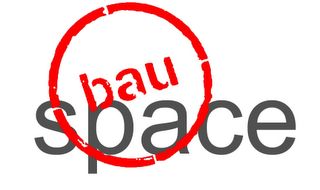bau 18

TONY MOORE: WHO KNOWS WHY?
By Vivian Goldstein
In Tony Moore’s latest sculpture installation, a provocative assemblage of approximately 150 clay body casts of his own head, we are treated to an experience of tremendous power and relevance for our times. Moore has ingeniously placed a number of these “heads” on the floor, covering the entire gallery, while the preponderance of the casts are vertically stacked in 6 steel cages, as a monolith in the center of the room. The walls have been left blank.
The assemblage is somewhat disorienting, as the viewer’s focus must shift from a downward gaze walking amongst the objects on the floor, to a visual confrontation with the stacked caged heads. These heads are also differentiated from the ones resting on the floor by the striking blue/green glaze which contrasts with the subtlety of the unglazed, but not ‘unmarked” heads on the floor. (These markings are the result of the “magic” of the week-long wood firing process itself.)
What are we to make of this collection of disembodied heads, which appear quite peaceful with their closed eyes and in contemplative repose? Many questions are posited both directly and indirectly by the artist. Among them might be the following:
1) What is the relationship of the individual to the collectivity?
2) How do we as individuals invest fully in our lives while knowing that our common fate as human beings is the inevitability of death?
3) Is it possible for there to be the experience of real freedom in the midst of a social/political climate which discounts the value of diversity and individual choice and makes us virtual “prisoners”?
4) How can we balance our desire to be simultaneously recognized for our unique attributes, while at the same time wishing always to be part of a larger whole?
Tony Moore’s work challenges us to reflect upon these questions, and others. Looking at “huddled masses” of heads imprisoned in cages creates a sense of claustrophobia and suggests a mass grave, but the serenity of the visages themselves may suggest that we are equally prisoners of our own mental structures, and not merely the victims of those who seek to dictate how we should live and how we should think Especially, in referencing death masks, and implying that consciousness may transcend any and all limitations inherent on this plane, there is an eerie suggestion that limitation itself is impermanent in nature, and a distortion of the essential nature of freedom.
Just as the ego/mind eventually gives way to the knowing which emanates from the source of all being, so is the suffering of individuals, a transitory experience, as horrible as such experiences may be.
Moore’s work does not so much present a world view, as expose the need for the artist, as well as for all people to take note of the paradoxes of mind and body, individual and social group, conventional reality and spiritual possibility. Drawing on spiritual tradition, the idea of “radical acceptance”, the courage to be with things exactly as they are is the essential wisdom. The Zen aphorism, “to study the self is to know the self; to know the self, is to lose the self” is an invitation for all of us to first immerse ourselves in the truth of things as they are, and then to reach from behind the bars of our cages to the boundless and unlimited possibilities that may be the next stage in the evolution of our planet.
We must be courageous, and daring. First we are implored to see things which we might prefer to avoid, and then we must choose to embody the truth, not as we have been conditioned to see it, but as we directly experience it. In this way, Tony Moore’s work inspires us to be non-complacent, pro-active and courageous in the way we live. He implores us to understand that although we are each unique, we are all fundamentally made of the same stuff.
Tony Moore is represented in international museum collections, including the Guggenheim Museum, Brooklyn Museum, USA and Yorkshire Museum and Derby Museum, UK. He is the recipient of a Louis Comfort Tiffany Award and Master of Fine Arts Degree in Sculpture from Yale University. Moore resided and maintained a studio in NYC for twenty five years before relocating to the Hudson Valley where he has built a studio and Japanese style wood-fire kiln on a mountaintop property near Cold Spring, NY.
Vivian Goldstein LCSW has a life-long interest in both art and spirituality. She maintains a private practice in NYC.



0 Comments:
Post a Comment
<< Home